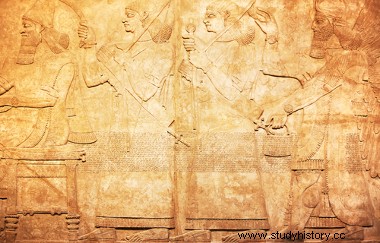
By Me. Cláudio Fernandes
The civilization Sumerian He even promoted, around 3000 BC, a true urban revolution in the Mesopotamian region, having built important cities such as Ur and Uruk, guarded by fortresses that deprived them of the onslaught of other peoples. However, around 2350 BC, this civilization collapsed, giving way to the rise of the Akkadians , who constituted a mighty empire in Mesopotamia, whose main leader was Sargon , the Great .
The organization of Sumerian city-states revolved around a political chief, the Patesi , which ensured the administration of the economy, security and the religious rituals of the community. With the periods of drought that began to ravage the region of Mesopotamia at the time of the last Sumerian dynasty, the power of the Patesi began to be weakened, mainly due to the pressure of nomadic peoples, who threatened to enter and plunder Sumerian cities. The amoritas were one of those peoples, who later founded the Empire Babylonian.
The Akkadians, who were of Semitic origin and migrated from the Syrian desert, seeking to escape the great drought, settled to the north of the Sumerian domain and there began to assert quickly, developing their own means of subsistence and political and military organization. It was from this position of influence over the weakened civilization that the Akkadians were able to conquer the Sumerian civilization and subjugate it.
The formation of the Akkadian Empire preserved many elements of Sumerian organization, but the deepest elements of the culture of that civilization, such as its language, were little by little disappearing.
